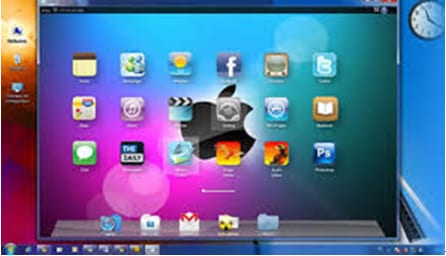

- Run ipad emulator mac install#
- Run ipad emulator mac zip file#
- Run ipad emulator mac code#
- Run ipad emulator mac simulator#
Moreover, you can use it in any operating system.Ĭons: Report generation time is too long and always does not provide accurate data. Pros: The main advantage of this application is that you can stream instantly and browse in any web browser.
Run ipad emulator mac code#
Run ipad emulator mac simulator#
But the main limitation of the iOS simulator is that it does not mimic hardware. Both create an OS environment on your PC. Though, both functions are almost the same. Sometimes it creates confusion for users. This topic was last updated on August 19, 2021, at 03:30:51 PM.Įggplantsoftware.When you search about emulators, you may find another similar name of iOS simulators. The app appears in the list of installed apps on the right side of the iOS Gateway window.
Run ipad emulator mac install#
Find and open the app you want to install from your Mac.To install an app on a connected simulator, follow these steps.
Run ipad emulator mac zip file#
zip file for installing your app onto an iOS simulator for testing. app file in the Finder on a Mac, right-click its icon and select Compress. I.e., /Users/mobileqa/Library/Developer/Xcode/DerivedData/MyApp-glsaqcpwolnnmaedrcqfqfnedoop/Build/Products/Debug-iphonesimulator/MyApp.app app file produced at this location: ~/Library/Developer/Xcode/DerivedData/-/Build/Products/Debug-iphonesimulator/.app Wait for the iOS simulator to display your application. In Xcode, run your project on an iOS Simulator.Create an iOS App to Install on Simulators ipa files on an iOS simulator like you do on a physical iOS device. Click Remove to delete the selected simulator. To delete a simulator, select the simulator you want to delete in the Simulators pane, then go to Simulators > Delete Selected. Now, iOS Gateway creates the simulator and adds it to the Simulators list, grouped with simulators of the same device type or iOS version (depending on how you've chosen to sort the list).Name your simulator, then select the Device Type and iOS Version that you want to simulate.The Create Simulator dialog window opens. To create a new simulator, go to Simulators > Create.The types of simulators your can create are determined by the active version of Xcode and the OS version running on your Mac. You can create and delete iOS simulators as needed. Note: The more simulators you have running at once, the more performance can degrade. To work with multiple simulators, repeat steps 2-4 as needed.The port number displays in the Simulators list in the iOS Gateway UI. The simulated device’s IP address displays in the title bar of the main iOS Gateway window. In Eggplant Functional, open the Connection List from the Connection menu.Select the device and iOS version combination that you want to simulate from the list, then click Start in the General tab.You can sort by device type or iOS version.

To change how the available simulators are sorted, go to iOSGateway > Preferences > Simulator. In iOS Gateway, make sure that the Devices/Simulators pane is in Simulators context.Connect to Simulators in Eggplant Functional You can connect to these simulated devices in Eggplant Functional and run tests as you would on a physical iPhone or iPad. The iOS Gateway application can simulate physical devices running iOS 9.0 and later. You are here: Testing with iOS Simulators


 0 kommentar(er)
0 kommentar(er)
